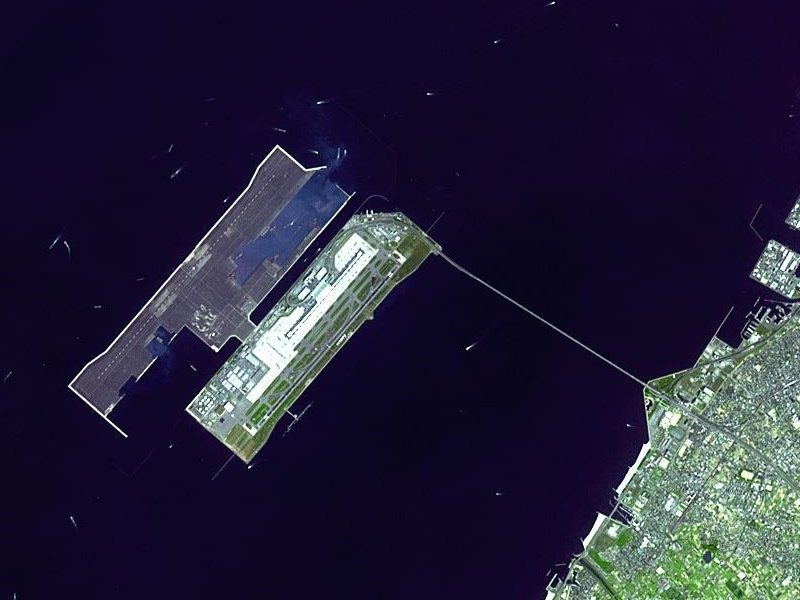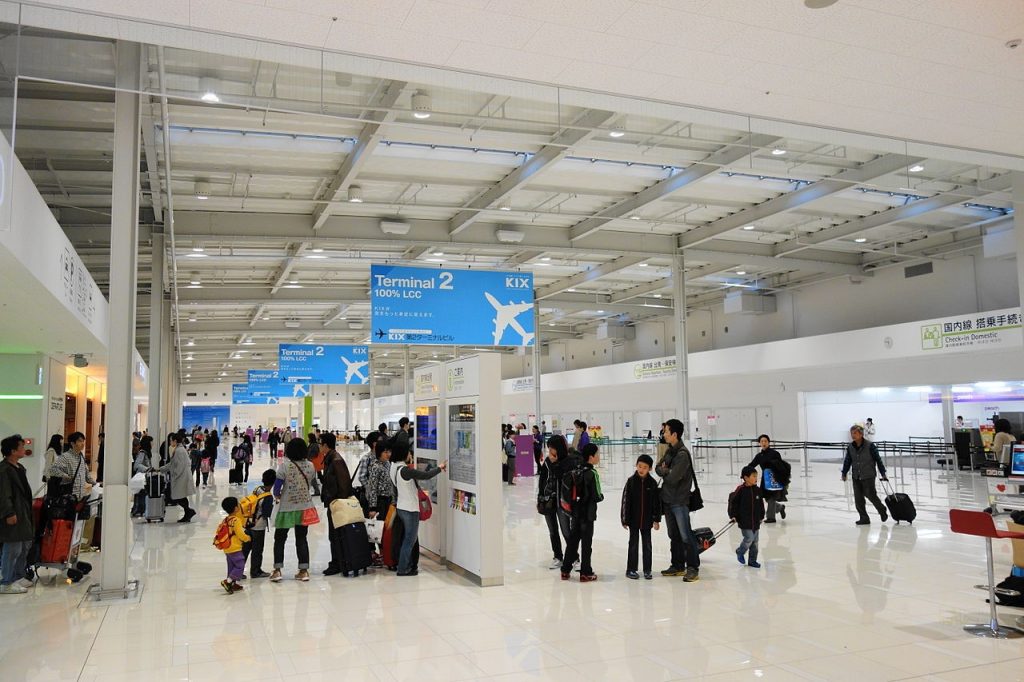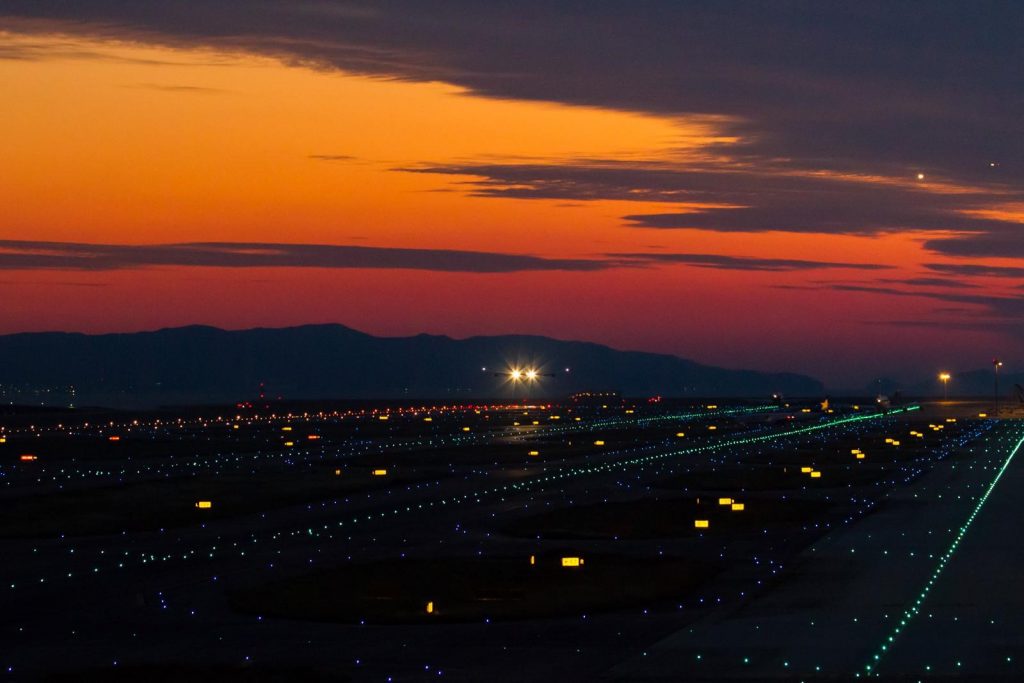InTrans / Jul 03, 2017
Transportation Feats of the World: Journeys from the Kansai Airport
Go! Magazine
 posted on July 3, 2017
posted on July 3, 2017
We’re checking back in with GO! Magazine’s tour of the Seven Transportation Feats of the World, highlighting transportation that’s really moved us. The next stop on our tour is found back on the island nation of Japan. The Kansai International Airport is one of Japan’s most important international airports and its’ most impressive. It’s located on an artificial island in the middle of the country!
The Kansai Airport in Osaka has been called “one of the most incredible engineering marvels of the century.” Located within the Osaka Bay, about 3 mi. from shore and less than 20 mi. from the Akashi Kaikyo Bridge, this airport is made to withstand some of the Pacific Ocean area’s most unforgiving natural disasters. First, let’s look at how the Kansai Airport, code name “KIX,” came to be.
History of KIX
Like many other transportation marvels before it, the Kansai International Airport was built out of necessity. In the 1980s, the Osaka Itami Airport (the area’s only international airport at the time) was “woefully inadequate” in fulfilling the traveling needs of Japan’s Kansai region, which includes Osaka—home to 2.6 million people—and other major Japanese cities like Kyoto and Kobe. City planners discussed the need for a new airport.
Keep in mind, Japan is about the size of California and so heavily populated that there’s hardly space to build anything new, let alone an airport that would require a large, flat, open space. Not only does Japan’s layout prevent expansion for something like an airport, it’s also restricted in the hours an airport could operate, since noise pollution from overhead aircraft could disturb residents in the area, especially late at night.
When government officials discussed the need for another airport, and to compete with Osaka’s “big sister” city Tokyo, they had to push the limits of how airports had been constructed in the past. The solution was to build the airport on a manmade island in a more southerly location within the Osaka Bay, where the airport could be opened without further crowding the city and still operating at all hours of the day, something that had not previously been accomplished with airports in the area before.
Construction
Since there was no island in the Osaka Bay, they needed to build one. Originally, the island was 2.5 mi. long, 4000 ft. wide, and 60 ft. deep in the water. To build something so far from shore and so deep would be challenging.

Construction began in 1987 with a 6.8 mi. sea wall consisting of a series of concrete blocks. These were used to outline where everything would eventually be built—something like the lip of a swimming pool. Then, 80 barges came in and dumped approximately 47 billion gallons of landfill into the structure. These landfill layers would provide most of the bulk of the artificial island. Then they built the passenger terminal, runway, and other above-ground structures.
The airport opened for business on September 4, 1994, making the Kansai International Airport the world’s first international airport in the middle of the sea and the island the biggest manmade landmass of its time. On April 19, 2001, the airport was one of 10 structures awarded the “Civil Engineering Monument of the Millennium” by the American Society of Civil Engineers.
Officials expanded the airport in 2003 and began building a 13,000 ft. long second runway and terminal. This runway opened in August 2007, and the new terminal building opened in late 2012. There are plans to eventually build more additions, including a third runway and a new cargo terminal. These additions would expand the airports’ size to 5 sq. mi., but the Japanese government is holding back due to economic reasons.

Feat of transportation
Several factors needed to be considered when the airport was being planned. Japan is subject to severe earthquakes. The region is also subject to typhoons, so the island had to be tall enough to withstand rising water levels during typhoon water surges.
Not only that, but the manmade island had to withstand pressures from the structures above without sinking into the seabed below. The bottom of the Osaka Bay is made of a layer of soft, spongy clay and engineers knew the island had the potential to sink after construction. To address the problem, Kansai engineers used a sand-draining technique to suck the water from the sand and speed up the sinking process proactively.
On January 17, 1995, the Kansai International Airport was struck by the Kobe earthquake. The epicenter was only about 12 miles away, and the disaster caused the deaths of 6,434 people on nearby Honshu. But due to impressive earthquake engineering preparedness, it remained “unscathed,” leaving even the glass windows intact. The airport also withstood a typhoon in 1998 with wind speeds over 120 mph.
The airport did experience difficulty with rapid sinking, but the problem has since been addressed by engineers and techniques to secure the island. Despite its difficulty to defy gravity underneath the water, the KIX and artificial island it sits on have proved to be steadfast feats of engineering when put to the test.
Journeys from KIX
The Kansai International Airport itself has a lot to offer. KIX offers an array of facilities and amenities like banks, a currency exchange, post office, business center, the Sky View Observation Hall, and over 110 retail outlets.

There’s even a bonus feat of transportation! People and cargo make it to and from the airport using the Sky Gate Bridge—the world’s longest double-decked truss bridge. The Sky Gate carries three lanes of automobile traffic on the top layer of the bridge and two lanes of rail traffic below. The bridge measures 12,303 ft. in length and opened in 1991 during airport construction.
KIX is a feat of transportation because it overcame numerous barriers like Japan’s fearsome earthquakes and typhoons as well as the country’s societal limitations, which forced the airport off shore in the first place. KIX continues to help people travel the world every day, with 23 million passengers annually.
References
www.youtube.com/watch?v=Zse2ZJa-vL8
www.osaka-kix.airports-guides.com/kix_history.html
www.sjsu.edu/faculty/watkins/kansaiairport.htm
www.cnn.com/travel/article/engineering-feats/index.html
Related links
Detailed history of construction: www.sjsu.edu/faculty/watkins/kansaiairport.htm
Tourism in Osaka Bay: insideosaka.com/osaka-bay-area/
(Video) Tour of the Kansai International Airport: www.youtube.com/watch?v=fA0szFSEROI
(Documentary) Megastructures – Kansai International Airport – National Geographic: www.youtube.com/watch?v=Zse2ZJa-vL8
By Hannah Postlethwait, Go! Staff Writer